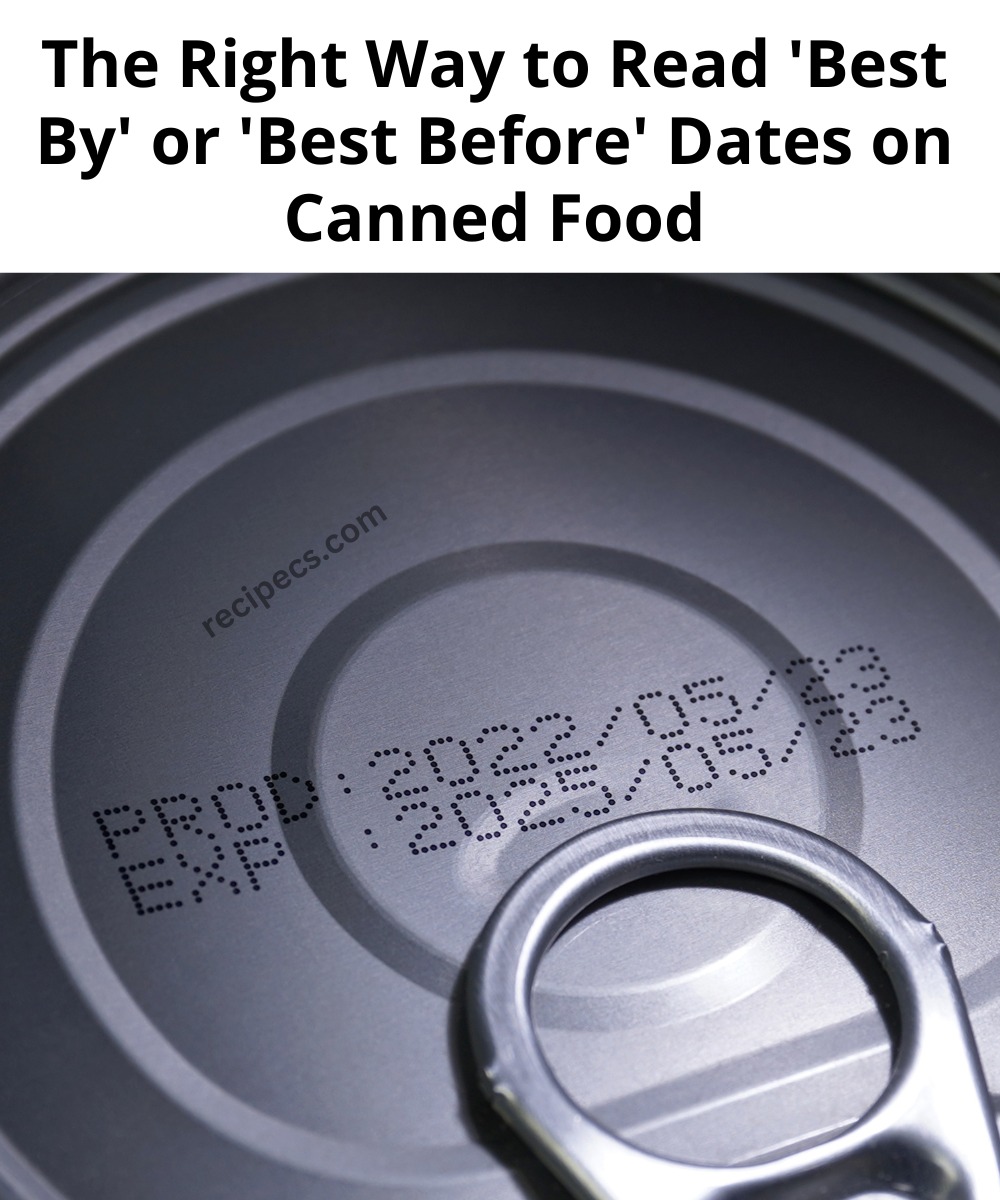Understanding “Best By” Dates on Canned Foods: What You Need to Know
Many people misunderstand “best by” and “best before” dates on food products, leading them to discard perfectly good canned goods prematurely. Contrary to popular belief, these dates do not indicate that a product is expired or unsafe to consume. Instead, they reflect the manufacturer’s estimate of when the food will be at its peak quality in terms of flavor and texture. This article will explore the significance of “best by” dates on canned foods like corn, green beans, and tuna, and provide practical tips on safely using these products beyond their labeled dates.
What Are “Best By” Dates?
“Best by” dates are often confused with expiration dates, but there’s an important distinction. While an expiration date suggests the point after which a product may no longer be safe to consume, a “best by” date is a recommendation for when the product will be freshest and most flavorful. After this date, the quality may gradually decline, but the food is not necessarily unsafe to eat. For canned goods, preserved through a vacuum-sealed process, the contents can remain safe for a considerable period beyond the labeled date if stored correctly.
How Long Can You Use Canned Foods Beyond the “Best By” Date?
Canned Corn
Canned corn is a pantry staple often used in soups, salads, and casseroles. The good news is that canned corn can typically remain safe for consumption for 1-2 years past its “best by” date, as long as it’s stored properly in a cool, dry place. While the corn may still be safe to eat, its quality, such as texture and flavor, may start to diminish over time.
Safety Tip: Always inspect the can for signs of damage, including bulging, rust, or leaks. A compromised can could indicate spoilage or contamination, so it’s best to discard it.
Canned Green Beans
Canned green beans, another household favorite, have a similar shelf life to canned corn. When stored under the right conditions, they can be used for 1-2 years past their “best by” date. The beans may still be safe to eat, but expect a softer texture and less vibrant flavor.
Safety Tip: Check the can thoroughly for damage, such as dents or swelling, which can indicate that the can’s integrity has been compromised. If you notice anything unusual, it’s safer to discard the product.
Canned Tuna
Canned tuna is known for its longevity and versatility. When stored properly, it can remain safe to eat for 3-5 years past the “best by” date. Thanks to its airtight seal and preservation process, canned tuna has a longer shelf life compared to other canned vegetables. However, over time, its quality may start to degrade, affecting texture and taste.
Safety Tip: When opening canned tuna, be mindful of any unusual odors, changes in texture, or discoloration. If it smells off or appears odd, it’s best to err on the side of caution and discard it.
Storage Tips to Maximize Shelf Life
Proper storage is key to maximizing the shelf life of canned foods. Here are essential tips to keep your canned goods in top condition:
- Store in a Cool, Dry Place: Keep canned goods in a pantry or cupboard away from direct sunlight and temperature extremes, which can accelerate deterioration and compromise the can’s seal.
- Keep Cans Upright: Store cans in an upright position to prevent damage to the seals and minimize the risk of leaks.
- Rotate Your Stock: Practice the “first in, first out” rule by placing newly purchased cans at the back and using older ones first. This helps ensure you use up your canned foods before they reach the end of their shelf life.
- Avoid Damaging Cans: Handle cans carefully to avoid dents or damage that could compromise the seal and lead to spoilage.
- Transfer Leftovers: If you don’t use the entire can’s contents, transfer leftovers to a sealed container and store them in the refrigerator for short-term use.
How to Tell if Canned Food Has Gone Bad
Even if your canned food is within the recommended time frame, perform a visual and sensory check before consuming. Here’s what to look out for:
- Bulging or Leaking Cans: A bulging or leaking can is a clear sign that the contents have gone bad and could be contaminated. Do not open or consume food from these cans.
- Rust or Corrosion: Rust can weaken the can, allowing air and bacteria to enter. If a can is heavily rusted, it’s safer to discard it.
- Unusual Odor or Appearance: When you open the can, check for off smells or changes in color and texture. If something seems off, do not taste it—just throw it away.
- Hissing Sound Upon Opening: If you hear a loud hissing sound when you open a can (and it’s not due to natural vacuum pressure), it could indicate that gases have built up inside due to spoilage.
Final Thoughts
In summary, “best by” dates on canned foods are not strict expiration dates but rather suggestions for when the product will be at its peak quality. Canned goods like corn, green beans, and tuna can often be used safely for an extended period beyond these dates—sometimes even years—if they are stored correctly and show no signs of damage or spoilage. When in doubt, always inspect the can and its contents thoroughly before using.
By understanding how to properly interpret “best by” dates and store canned goods, you can reduce food waste, save money, and enjoy your pantry staples long after their labeled dates. Following these guidelines and using your best judgment will help you safely extend the shelf life of your canned foods and get the most out of your pantry essentials.
